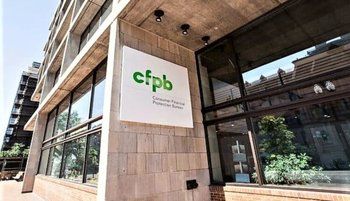An Old Mortgage Finds Some New Twists
If you're getting into a new mortgage in 2006, you might find a few new choices among the old standbys. This may be especially true if you need ways to make your income get you more loan than it normally might.
Last year's hot adjustable-rate mortgage (ARM) product, the "Option ARM", is getting a little less favor of late, due largely (and correctly) to discussions about risks inherent in the product as well as tighter standards for qualification. Those tighter standards have been self-imposed by some of the ARM's biggest proponents. As well, there has been additional pressure from regulators who have become concerned that too many of these kinds of loans are being made to borrowers ill-equipped to handle them. The months and years ahead will reveal to us if those loans will be (or have already become) a problem, and for whom, but for now we'll leave them be.
In the meanwhile, borrowers looking for easier monthly payment plans continue to search for loans which can help stretch them into today's rather expensive homes. In addition to tighter credit for Option ARMs, rising short-term interest rates have made high-frequency adjustment ARMs more expensive. Hybrid ARMs with interest-only payments certainly carry the potential for a significant payment leap when the IO period expires; of course, this is made worse if rates are also higher at the time the loan comes due to adjust.
Because the prospects for a leap in payments unnerves some borrowers, mortgage lenders are now starting to promote a product which provides some of the budget-expanding capability of an "IO" product, but has none of the associated interest-rate risks: the 40-year fixed-rate mortgage (FRM).
To be sure, loans with 40-year terms are hardly new; they've popped up in the market (and disappeared as quickly) from time to time. When it has surfaced, a 40-year payment term has mostly been found on short-term (often one-year) ARMs, rather than fixed-rate loans. In June 2005, however, Fannie Mae announced that they would begin to buy 40-year loans of all stripes, including Hybrid ARMs. Lenders, ever-anxious to have fresh products to put on the market, have begun to put these into play, although the market share is currently believed to be small.
The question is whether or not a 40-year FRM is right for you. If you can't afford a 30-year FRM, it's unlikely that you'll get much help from the 40-year flavor: since lenders aren't making many of these loans, they need to charge a premium for them. You'll find that the interest rate for a 40-year FRM is typically a quarter-percent (or more) higher than a comparable 30-year FRM. That detracts from any "savings", as you'll see in our comparisons below.
There are three significant factors to consider when evaluating 40- versus 30-year terms. The first is any real differential in monthly payments; the second is the interest cost over time; and the third is the size of the remaining balance on each at given points in time.
40-year (fully-amortizing "FA") versus 30-year FRM (FA)
It's safe to say that selecting a 40-year term will improve your cash flow to a degree, or alternatively will allow you to borrow somewhat more with the same income. However, those benefits may be smaller than you think.
Let's compare a standard fully-amortizing 30-year FRM for $100,000 against a fully-amortizing, 40-year FRM for the same amount:
| Term Yrs | Interest Rate | Monthly Payment | Cost After | Interest | Remaining Loan Balance |
| 30 | 6.25% | $615.71 | 12 mos | $6,217 | $98,828 |
| 60 mos | $ 30,280 | $93,337 | |||
| 120 mos | $58,124 | $84,238 | |||
| 360 mos | $121,658 | $0 | |||
| 40 | 6.50% | $585.45 | 12 mos | $6,484 | $99,459 |
| 60 mos | $32,033 | $96,905 | |||
| 120 mos | $62,880 | $92,623 | |||
| 360 mos | $162,323 | $51,560 | |||
| 480 mos | $181,019 | $0 | |||
|
Difference in monthly payment, 30 vs. 40: $30.26 in favor of the 40-year |
|||||
By selecting the 40-year term, you've improved your monthly cash flow by just over $30 per month, or about $363 over the first 12 months. However, while your payment is lower on the 40-year, that money isn't free; in the first year alone, some $267 of that "savings" was spent on the 40-year's additional interest cost. Also, after that first year, the balance on your 40-year loan is $631 higher than it would be on a loan with a 30-year term.
The "benefit" of the minor improvement in cash-flow becomes much more of a detriment as time rolls forward. After five years, the costs of having a 40-year term continue to mount. While the differential in your monthly payment -- the $30.26 above -- remains constant, the swing in total interest cost of the 40-year begins to weigh more heavily, not to mention the widening differential in remaining loan balances.
If you itemize for tax purposes, a portion of the interest you pay will be tax-deductible. However, spending a dollar of interest in hopes of getting perhaps 25 cents back isn't a fiscally sound option. Generally, it's better not to spend the dollar in the first place.
Over five years, the following occurs:
Differential in 5yr interest cost, 30 vs. 40: $1,753 in favor of the 30-year
(the 30-year cost $1,753 less)
Differential in remaining balances, 30 vs. 40: $3,568 in favor of the 30-year
(you have paid off $3,568 more with the 30-year term).
Without belaboring the point, and aside from the depressingly long time you would be paying it, a full 40-year term will set you back nearly an additional 50% more in total interest cost than would a 30-year term. It's true that few mortgages of any term are actually paid to term, and in the case of a 40-year, that's a very good thing indeed. But on a straight dollar-for-dollar basis, the minor break obtained by selecting a 40-year term is beaten hands down by a 30-year term.
Comparing Other Options
But what of other comparisons which might be more fair? A borrower looking for some cash-flow improvement, but fearful of the risks found in option-style ARMs or even interest-only ARMs, might take a look at a 40-year term as they weigh the offerings available to them in the market. Is it possible to have a significant, measurable cash-flow improvement, risk-free? What about comparing a 5/1 Hybrid ARM with interest-only payments versus a fixed-rate, 40-year fully-amortizing loan.
| Term Yrs | Interest Rate | Monthly Payment | Cost After | Interest | Remaining Loan Balance |
| 5/1/30 Interest Only Payments |
6.00% | $499.99 | 12 mos | $5,967 | $100,000 |
| 60 mos | $ 29,027 | $100,000 | |||
| 120 mos | Unknown cost due to rate | ||||
| 360 mos | change at 61st month | ||||
| 40 | 6.50% | $585.45 | 12 mos | $6,484 | $99,459 |
| 60 mos | $32,033 | $96,905 | |||
| 120 mos | $62,880 | $92,623 | |||
| 360 mos | $162,323 | $51,560 | |||
| 480 mos | $181,019 | $0 | |||
|
Differential in monthly payment, 5/1/30 IO vs. 40: $85.45 in favor of the 5/1 I/O |
|||||
While the 5/1 does hold a cost advantage over the 40-year, and a fairly sizable one, at that, the 40-year holds what may be an even greater advantage to offer: an interest rate which never changes.
By its nature, a five-one ARM offers a fixed interest rate for just 60 months, after which the borrower can be fully at the whims of the economy and bond markets. While interest rate limiters ("caps") do exist for these products, they may offer scant protection from a sharp rise in interest rates, as many 5/1 ARMs allow for up to a 5% jump in the rate at the time of the first adjustment (a "5% first-adjustment cap"). Worse, this adjustment usually comes at the precise moment that the interest-only period expires; that change from an interest-only to a fully-amortizing payment stream means payments will spike regardless of any change to interest rates. In effect, the 5/1 ARM could see the borrower suffer a "double whammy", both resulting in higher -- perhaps much higher -- monthly payments.
Meanwhile, the 40-year FRM continues to chug along, offering a known, predictable payment. For a borrower with a need for some cash flow help but with an uncertain time horizon, a 40-year may offer a greater level of comfort, even if there may be no savings to speak of.
Balloons and other Oddities
There are a couple of other innovations in 40-year product designed to make them more attractive and competitive against other offers in the market. These include at least two varieties of "40-due-in-30" mortgages, one a "balloon" and the other somewhat more unique.
The "40-due-in-30"
Balloon mortgages aren't a new product, but the "40-due-in-30" is certainly an interesting offer. Most traditional balloon products present a short-term solution for a borrower, offering 5 or 7 years with a fixed rate. After the five- or seven-year period, the remaining loan balance would become due and payable. The interest rate you'd pay would usually be less than that of a true 30-year FRM because the loan actually ends at the end of the balloon period. A short-term loan with an absolute end after only a few years turned off many borrowers, so other choices began to crowd them out. Initially, balloon-reset or "two-step" mortgages found favor; these didn't come to an abrupt end but continued for the remainder of the term at a new interest rate. Borrowers liked them, but investors didn't, and they've faded over time.
In recent times, balloon mortgages have come to be largely replaced by Hybrid ARMs, where the change into an ARM means that the loan will continue after even the short fixed rate period ends. These have proven to be acceptable to both borrower and investor.
The true balloon-style 40-due-in-30 bases your payments on a 40-year term, but expires after 30 years. If the interest rate on a 40-due-in-30 was the same as a traditional 30, the cash-flow improvement would be as follows:
| Term Yrs | Interest Rate | Monthly Payment | Cost After | Interest | Remaining Loan Balance |
| 40-Due-In-30 | 6.25% | $567.73 | 12 mos | $6,235 | $99,421 |
| 60 mos | $30,771 | $96,706 | |||
| 120 mos | $60,337 | $92,228 | |||
| 360 mos | $154,951 | $50,565 | |||
| 30 | 6.25% | $615.71 | 12 mos | $6,217 | $98,828 |
| 60 mos | $ 30,280 | $93,337 | |||
| 120 mos | $58,124 | $84,238 | |||
| 360 mos | $121,658 | $0 | |||
|
Differential in monthly payment, 40-due-in-30 vs. regular 30: $47.90 in favor of the 40-due-in-30. |
|||||
With a near $50 per month differential, and not much by way of additional interest cost in the early years, the 40-due-in-30 could provide some benefit. However, as with all long-termed mortgages, the loan balance on the 40-due-in-30 declines much more slowly, with almost an $8000 difference at the end of ten years.
Having it Both Ways
A new twist on the 40-year-due-in-30 takes a different tack to produce cash-flow improvement. For the first ten years, the payment is based upon a 40-year term; after that, the payment is adjusted to a fully-amortizing payment sufficient to retire the loan over a 20-year term. This can create some payment shock for borrowers who keep the loan that long. It's anticipated that many borrowers either won't hold the loan that long, or will be financially able to afford the higher cost.
Here's how the payments on this twist would work:
| Term Yrs | Interest Rate | Monthly Payment | Cost After | Interest | Remaining Loan Balance |
| 10/40 w/20FA | 6.25% | $567.73 | 12 mos | $6,235 | $99,421 |
| 60 mos | $30,771 | $96,706 | |||
| 120 mos | $60,337 | $92,228 | |||
| $673.77 | 121-360 mos | $69,5461 | - | ||
| ? | Total Cost: | $129,883 | $0 | ||
| 30 | 6.25% | $615.71 | 12 mos | $6,217 | $98,828 |
| 60 mos | $ 30,280 | $93,337 | |||
| 120 mos | $58,124 | $84,238 | |||
| 360 mos | $121,658 | $0 |
It's an interesting vehicle, because it essentially started with a period of delayed (or deferred) amortization, then has a period of accelerated amortization in order to complete payments in a total of a 30-year term. The payment shock after ten years is actually not that bad -- just over $100 per month -- and a borrower's income should have risen by that much over the last decade. The cumulative cash-flow improvement over the ten-year period is $5,758, and the total interest charge for that additional flexibility after the entire term is completed is $8,225. Of all the 40-year opportunities outlined above, this one may actually make the most sense. You get some up-front improvement, but won't spend the rest of your life (perhaps literally!) paying for it.
Will other kinds of loans, or other features, begin to show up with 40-year terms? Maybe, if the market (that's you) shows signs of accepting them. The fact that Fannie Mae will buy hybrids with 40-year back-ends suggests that they'll be around for a while, at least. Lenders will experiment, too; you might see a five-one hybrid ARM with a 40-year term and interest-only payments, or some form of Option-style ARM with a 40-year term. If we start to see these kinds of offers, we'll examine them in a future article.
Copyright 2006-2021, HSH Associates. All rights reserved.
This article may not be reproduced without express written consent. Contact us regarding reproduction of this article.



